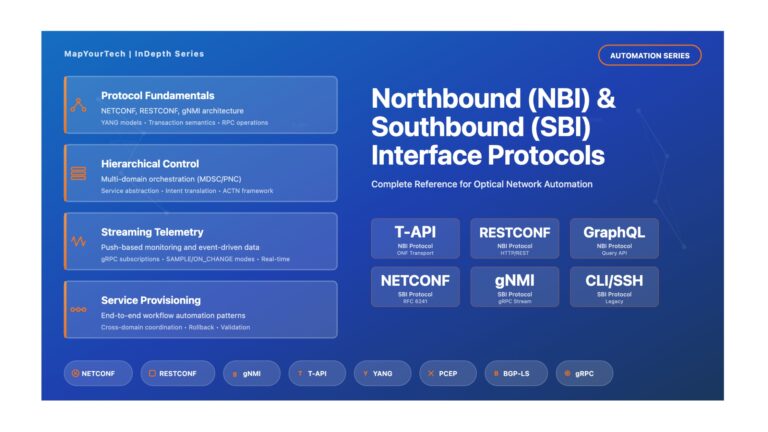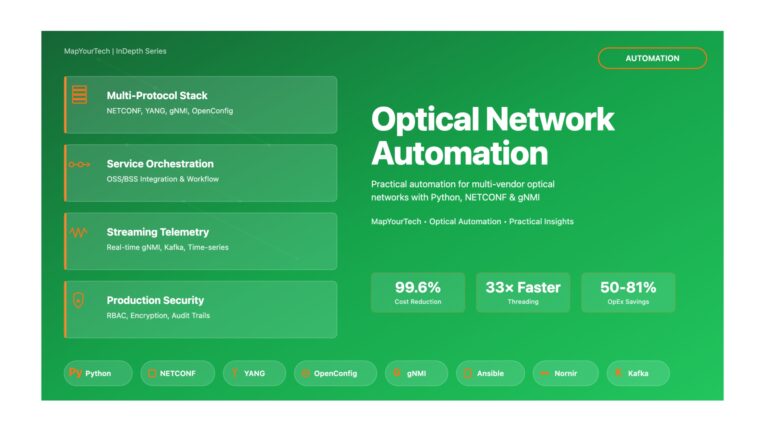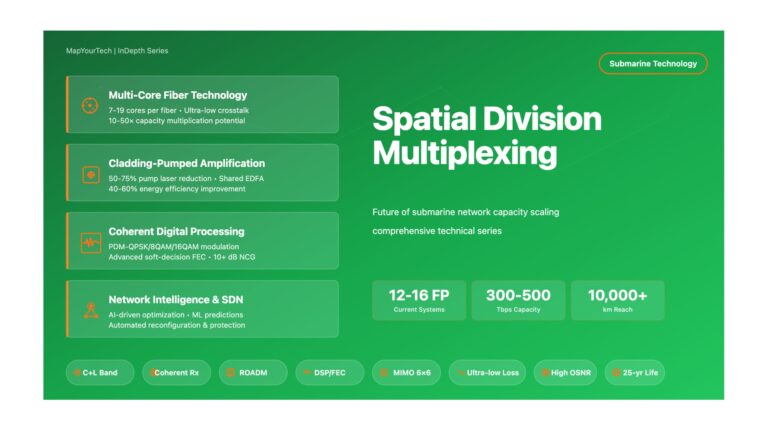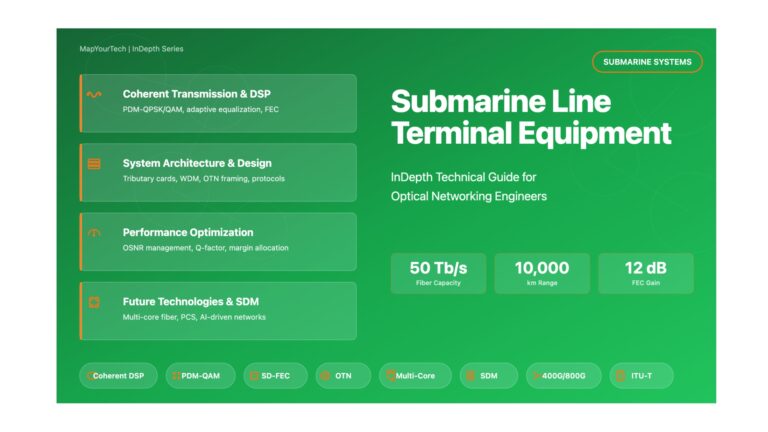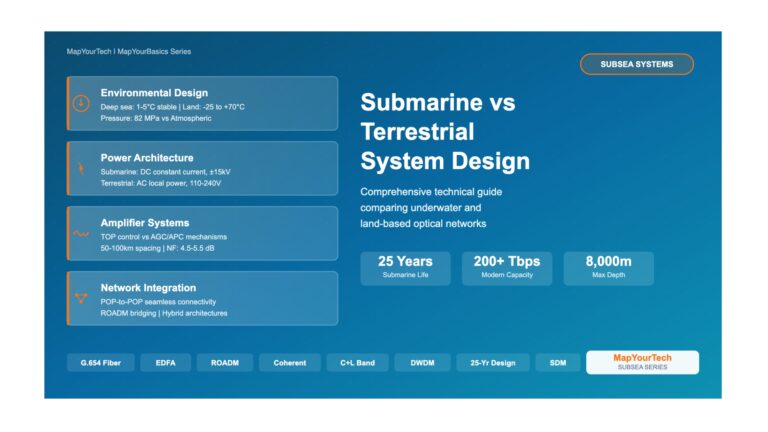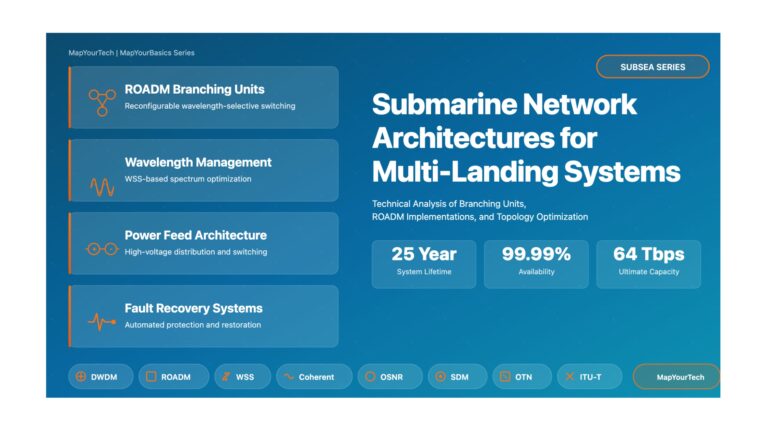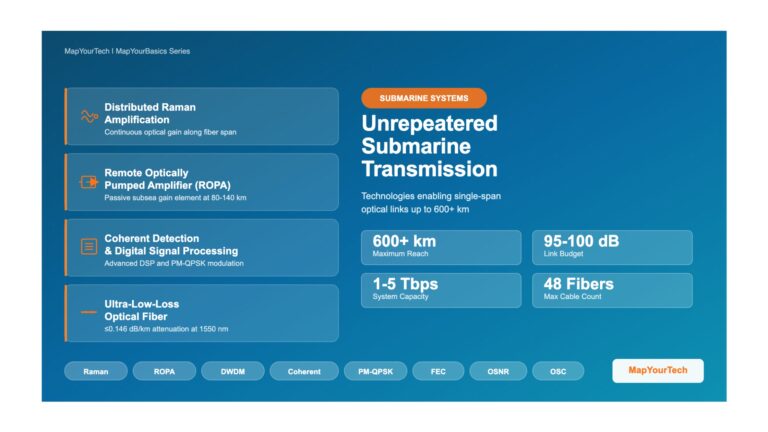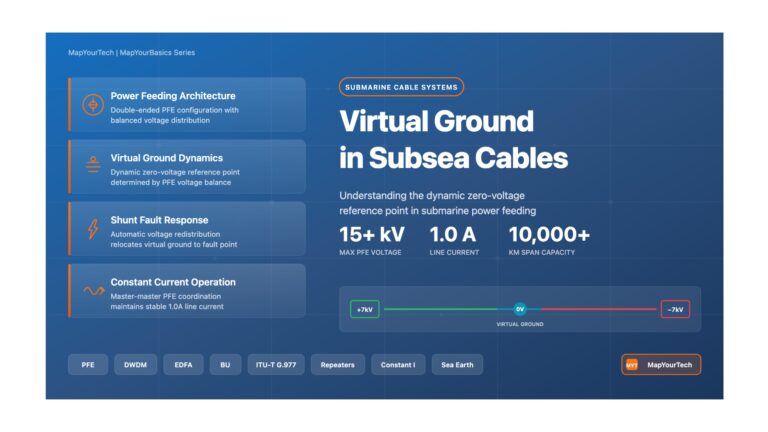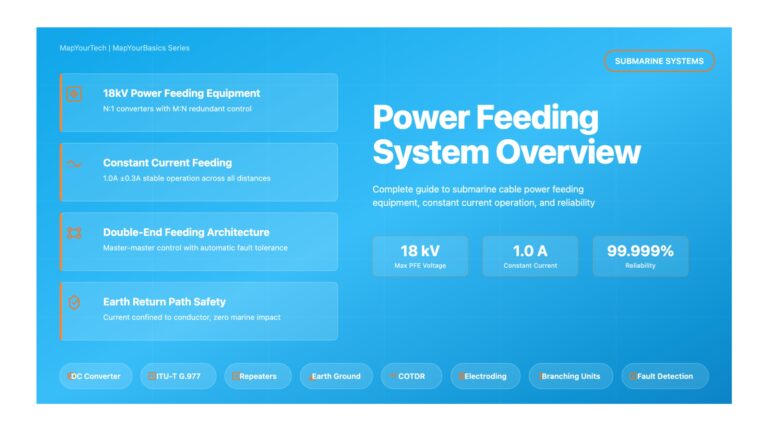Technical
Showing 31 - 40 of 573 results
NBI and SBI Protocols at Different Layers – Part 1: Foundation & Core Concepts | MapYourTech NBI and SBI Protocols...
-
Free
-
December 1, 2025
Comprehensive Visual Guide: Optical Fiber Installation Methods Optical Fiber Installation Methods Underground, Aerial, OPGW, Submarine, Terrestrial and All Deployment Techniques...
-
Free
-
November 30, 2025
Spatial Division Multiplexing: Future of Submarine Network Capacity Spatial Division Multiplexing: Future of Submarine Network Capacity Exploring the Next Generation...
-
Free
-
November 30, 2025
Submarine Line Terminal Equipment (SLTE) Submarine Line Terminal Equipment (SLTE):InDepth Foundation, Evolution & Core Concepts Submarine Optical Networks Introduction Submarine...
-
Free
-
November 30, 2025
Submarine vs Terrestrial System Design Differences – Comprehensive Visual Guide Submarine vs Terrestrial System Design Differences Practical Information Based on...
-
Free
-
November 30, 2025
Advanced Deep Dive: Submarine Network Architectures for Multi-Landing Systems Advanced Deep Dive: Submarine Network Architectures for Multi-Landing Systems Technical Analysis...
-
Free
-
November 30, 2025
Unrepeatered Submarine Transmission Systems: Technologies and Deployment Unrepeatered Submarine Transmission Systems: Technologies and Deployment Exploring the technologies enabling single-span submarine...
-
Free
-
November 30, 2025
Virtual Ground in Subsea Cable Systems Submarine Cable Power Systems Virtual Ground in Subsea Cable Systems Understanding the dynamic zero-voltage...
-
Free
-
November 30, 2025
Power Feeding System Overview – Comprehensive Visual Guide Power Feeding System Overview Power Feeding Equipment (PFE) Practical Information Based on...
-
Free
-
November 30, 2025
Explore Articles
Filter Articles
ResetExplore Courses
Tags
automation
ber
Chromatic Dispersion
coherent optical transmission
Data transmission
DWDM
edfa
EDFAs
Erbium-Doped Fiber Amplifiers
fec
Fiber optics
Fiber optic technology
Forward Error Correction
Latency
modulation
network automation
network management
Network performance
noise figure
optical
optical amplifiers
optical automation
Optical communication
Optical fiber
Optical network
optical network automation
optical networking
Optical networks
Optical performance
Optical signal-to-noise ratio
Optical transport network
OSNR
OTN
Q-factor
Raman Amplifier
SDH
Signal amplification
Signal integrity
Signal quality
Slider
submarine
submarine communication
submarine optical networking
Telecommunications
Ticker

